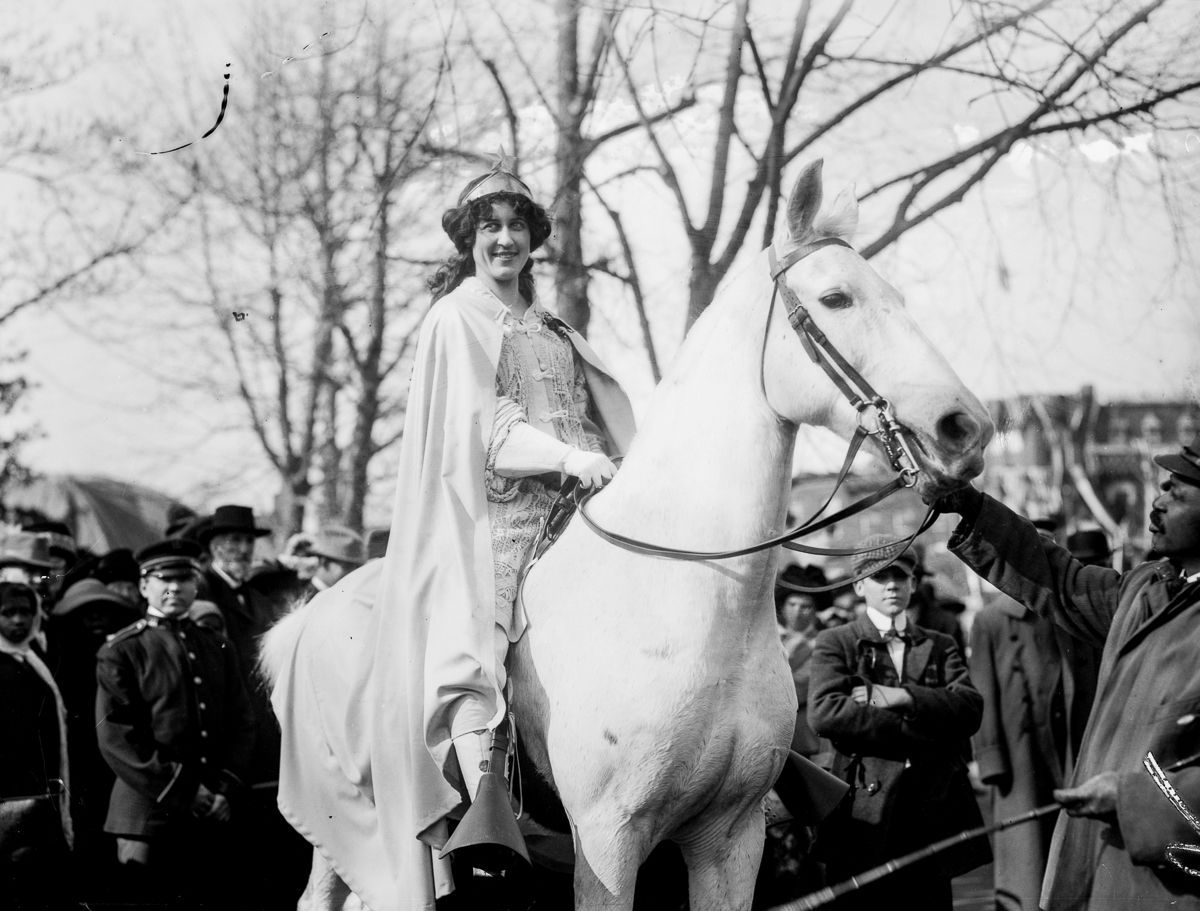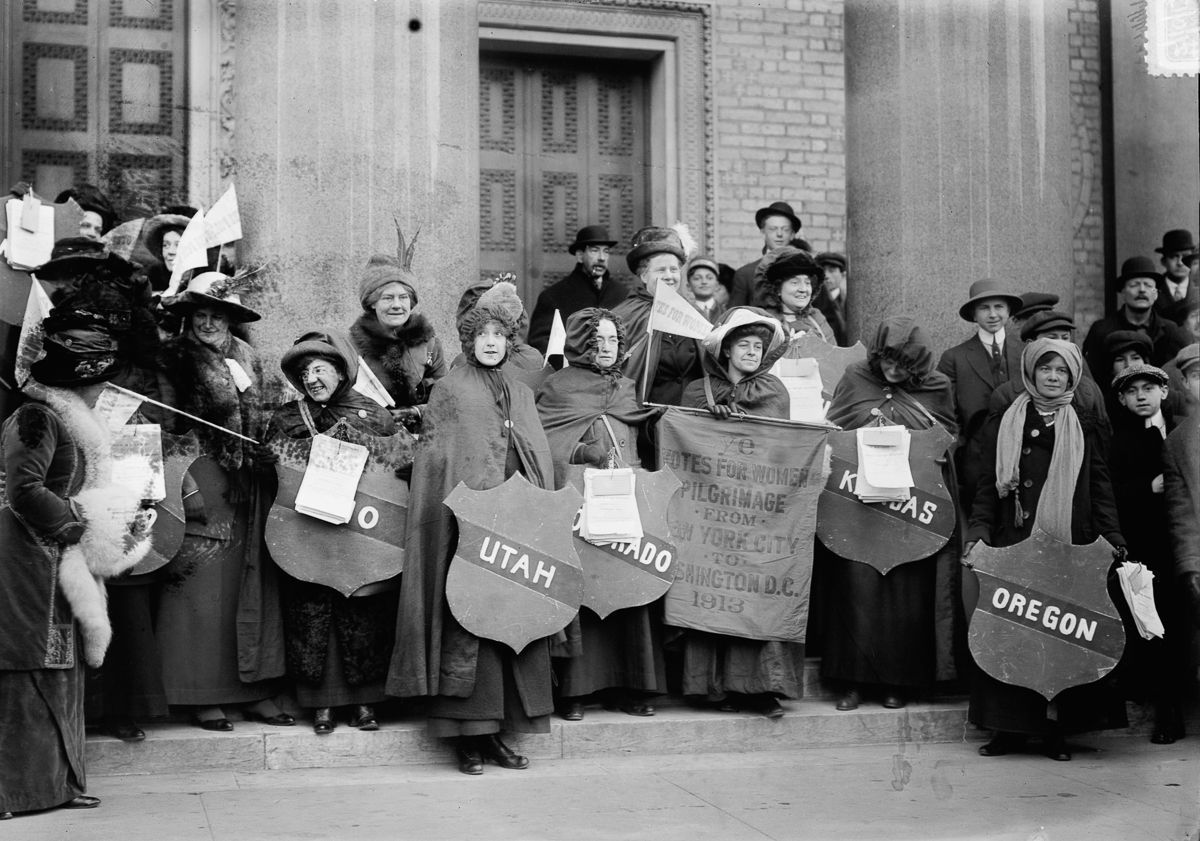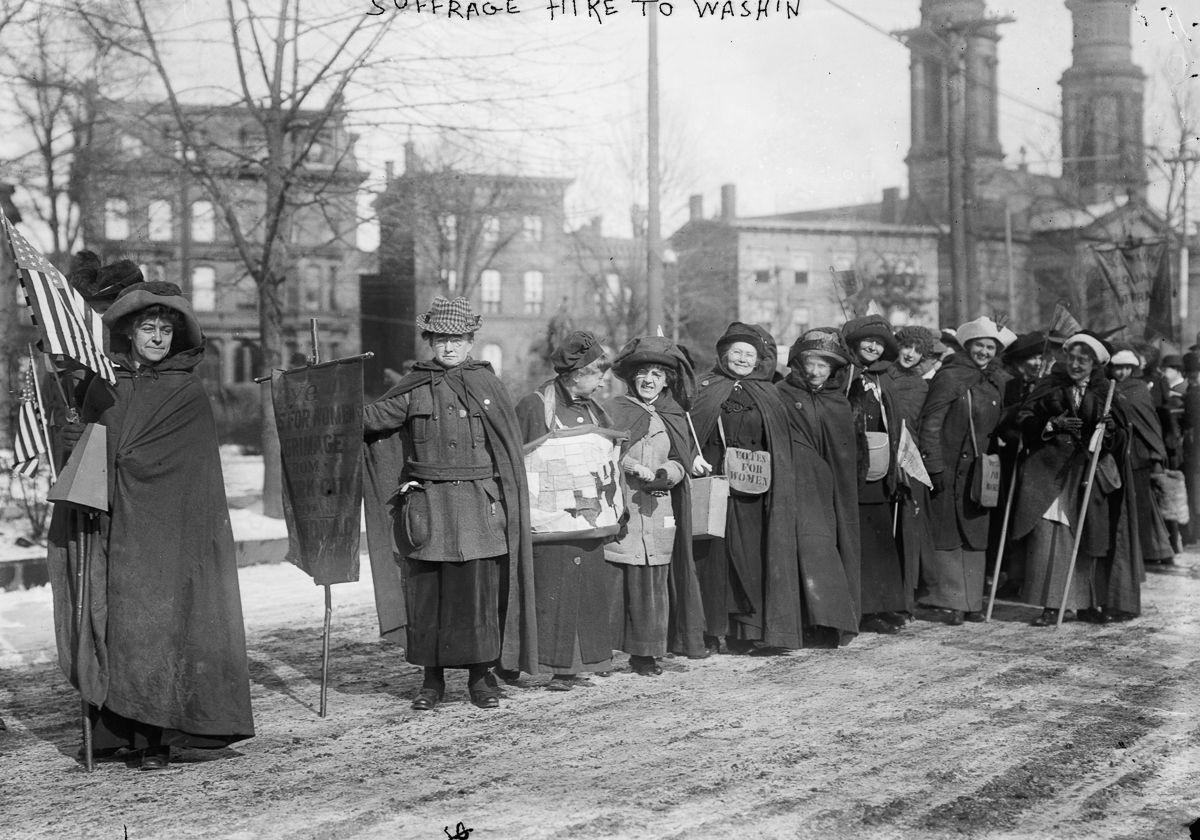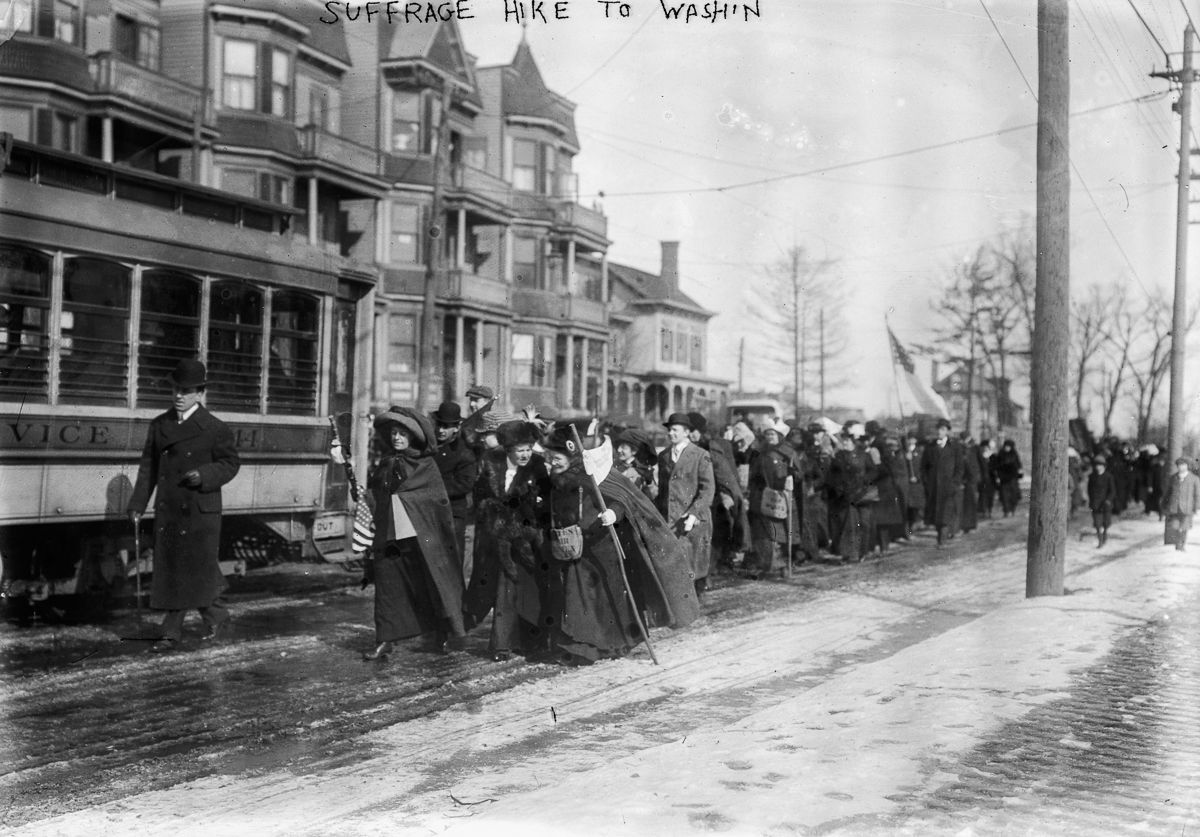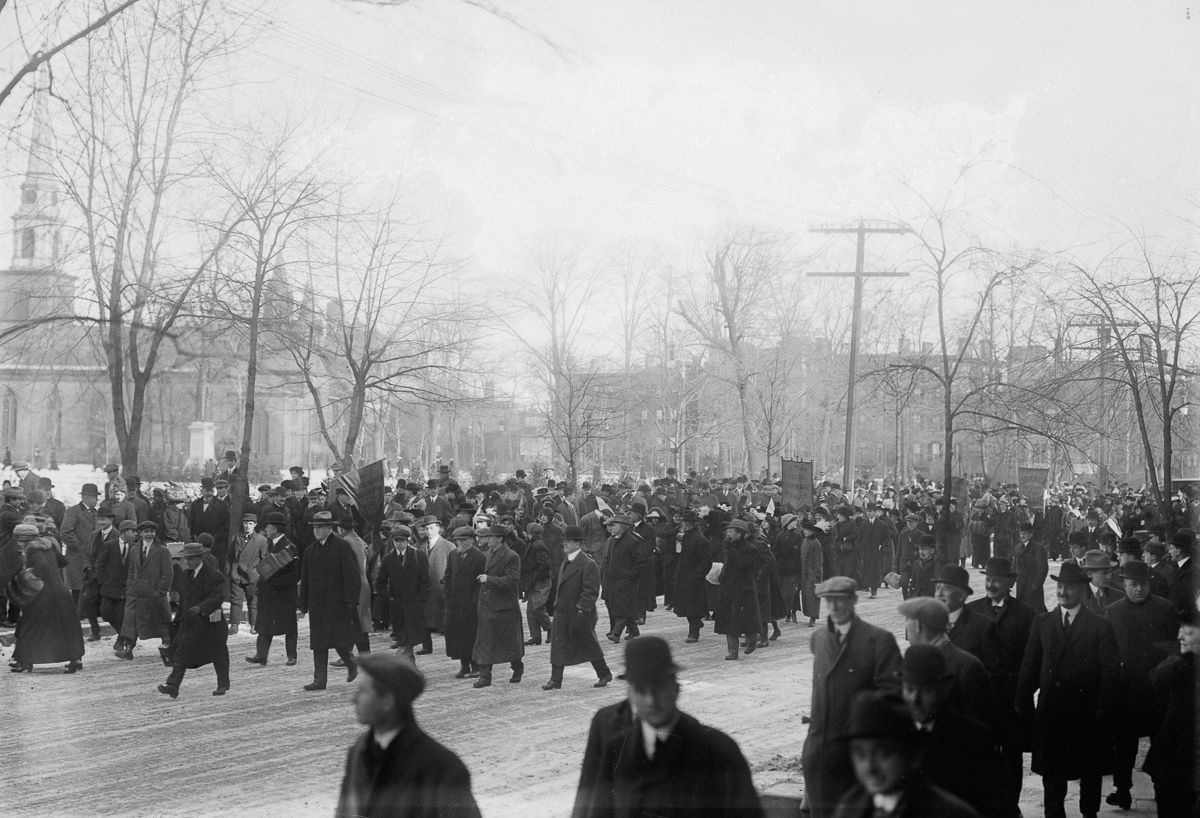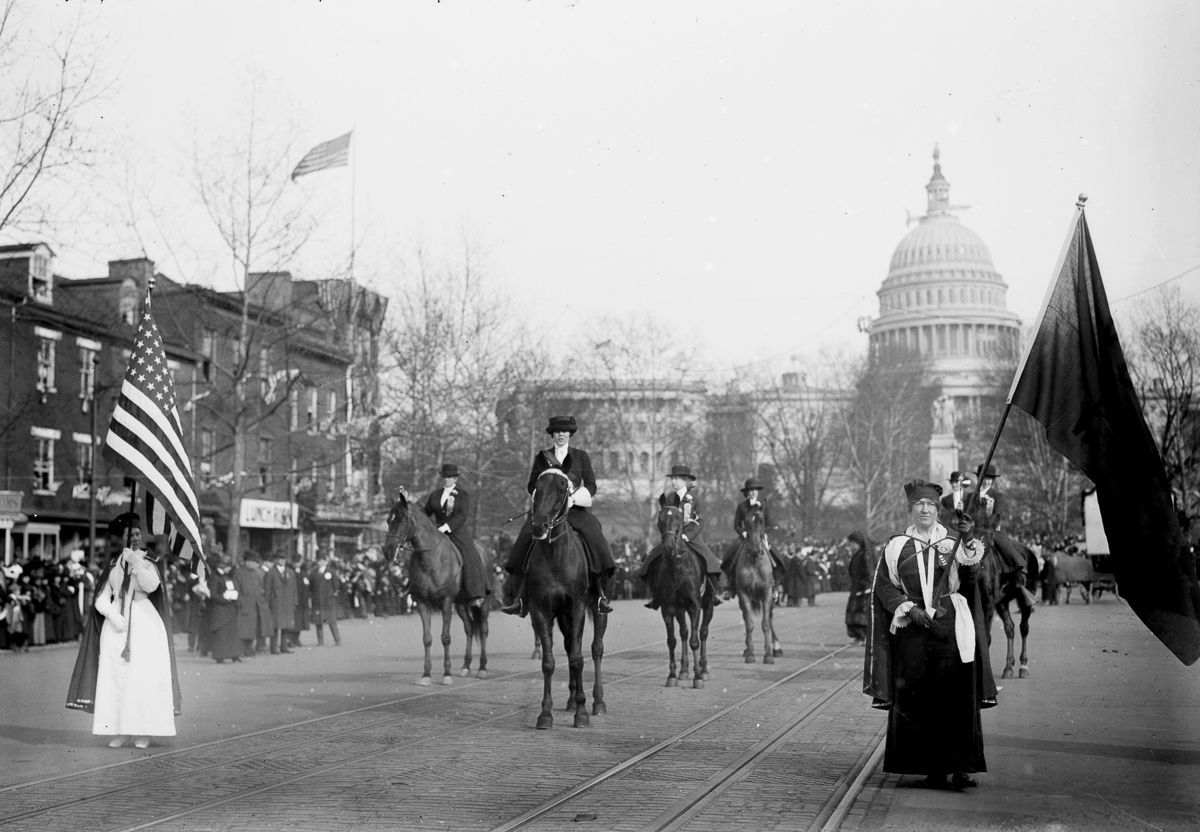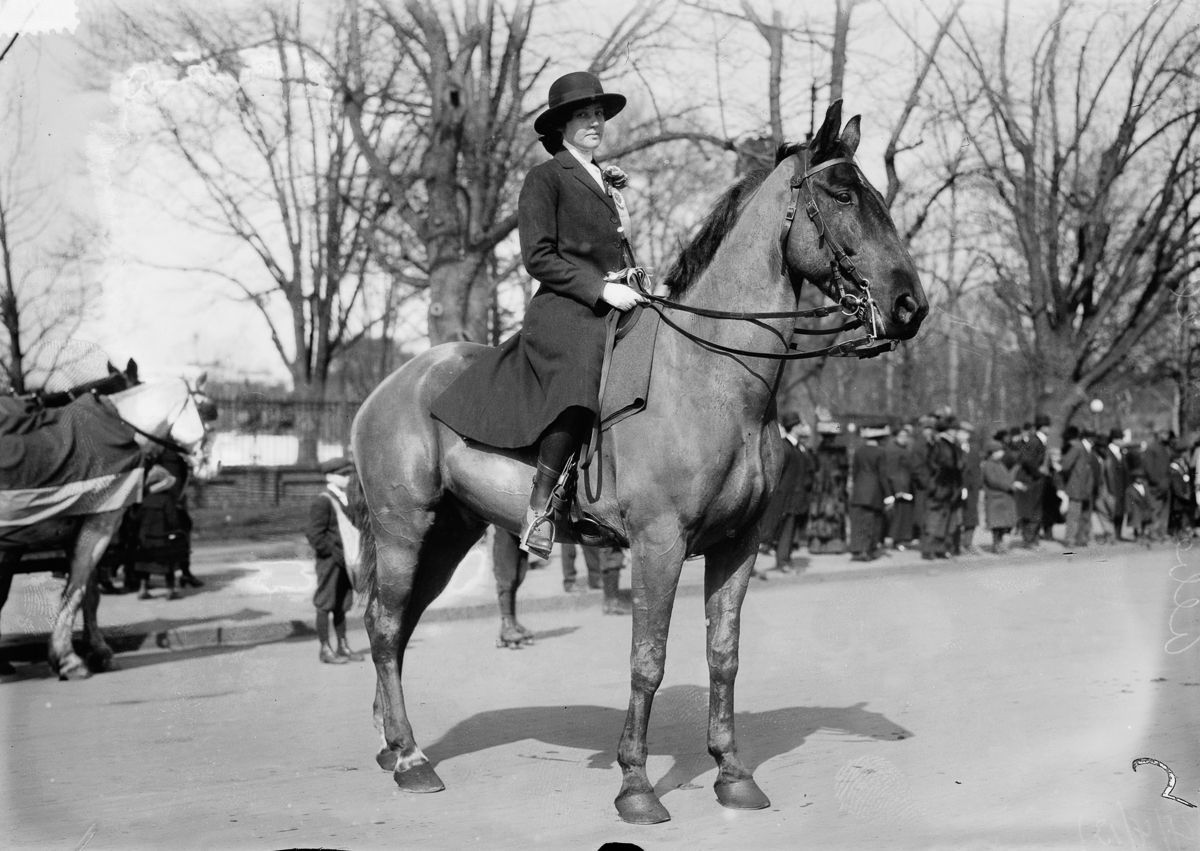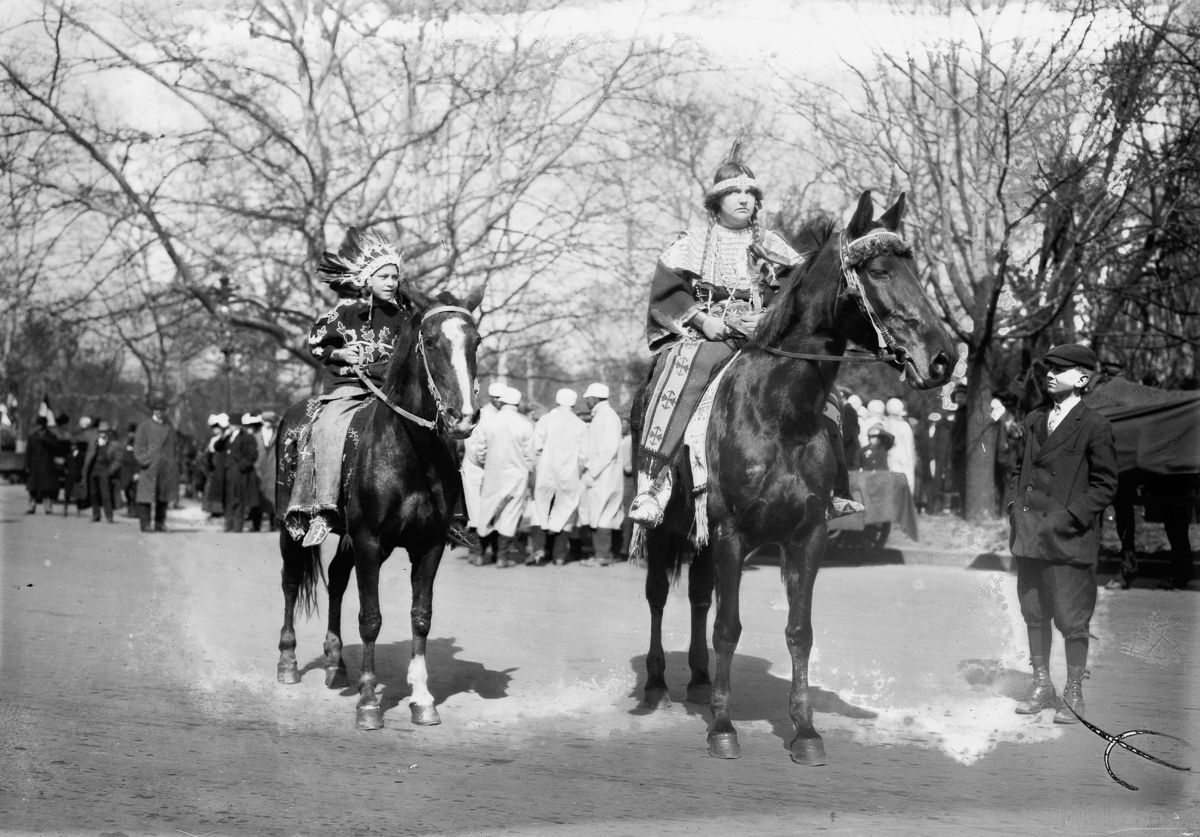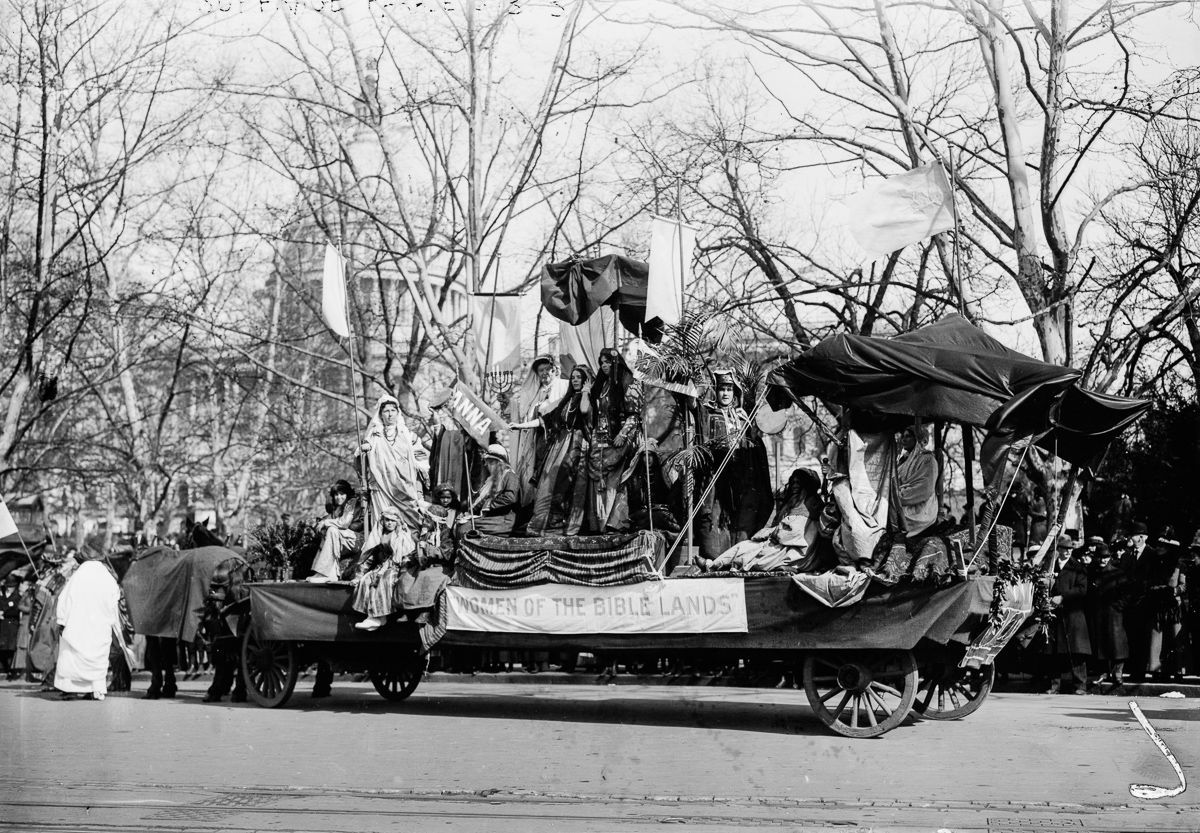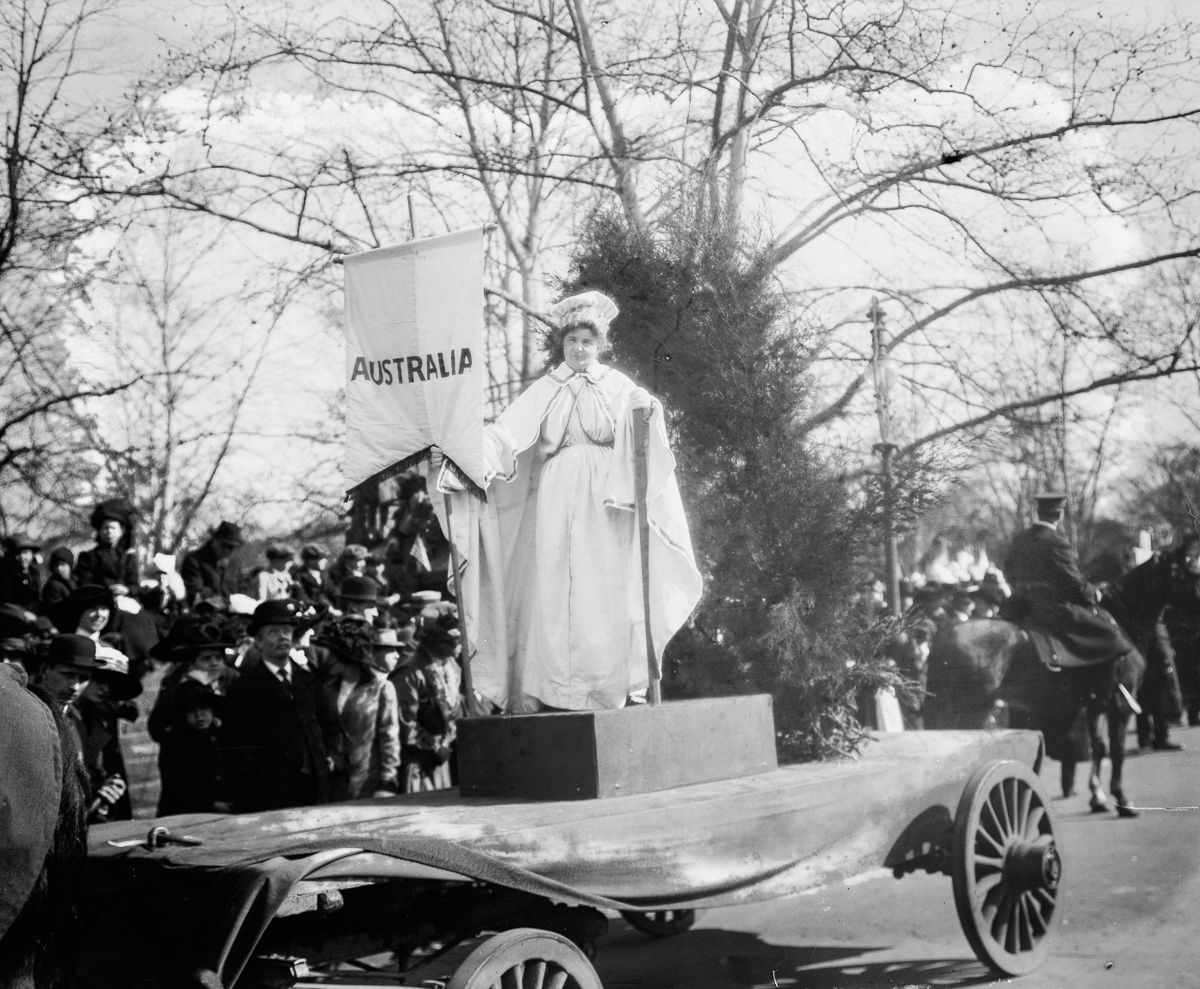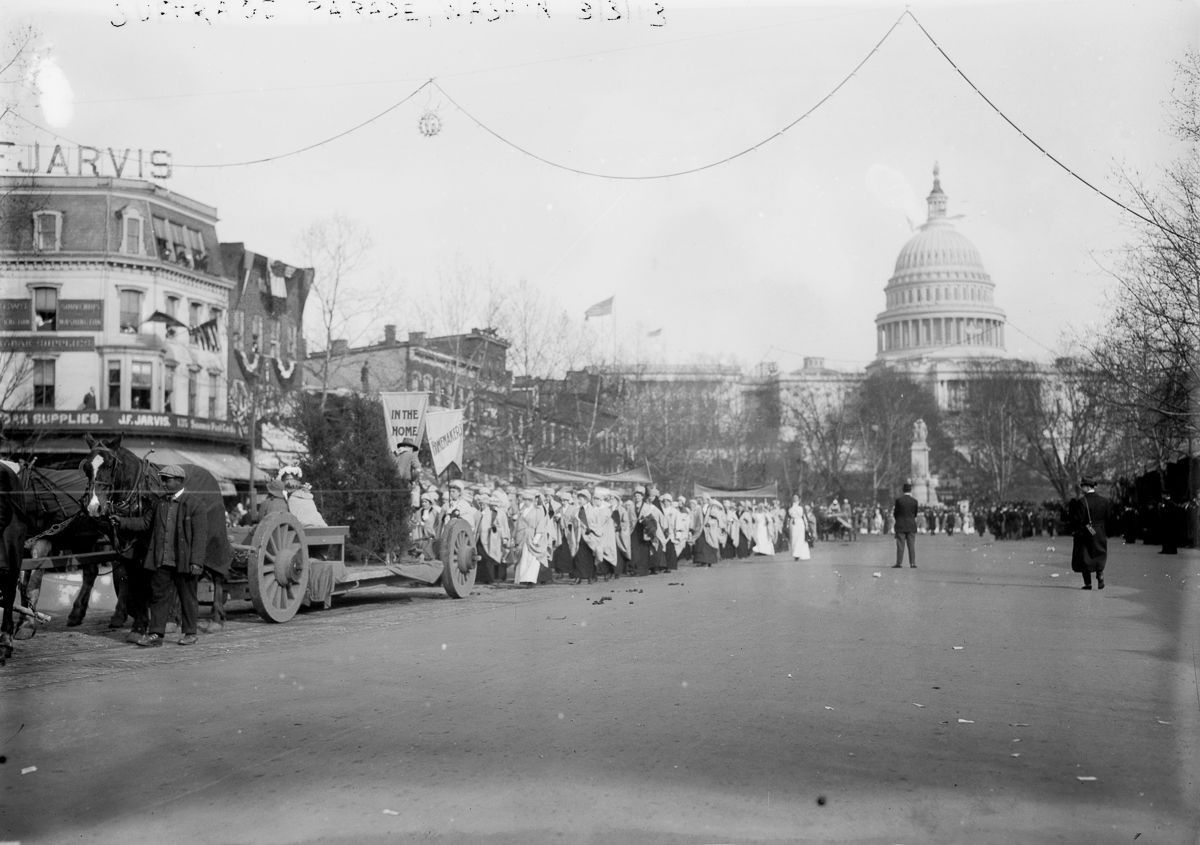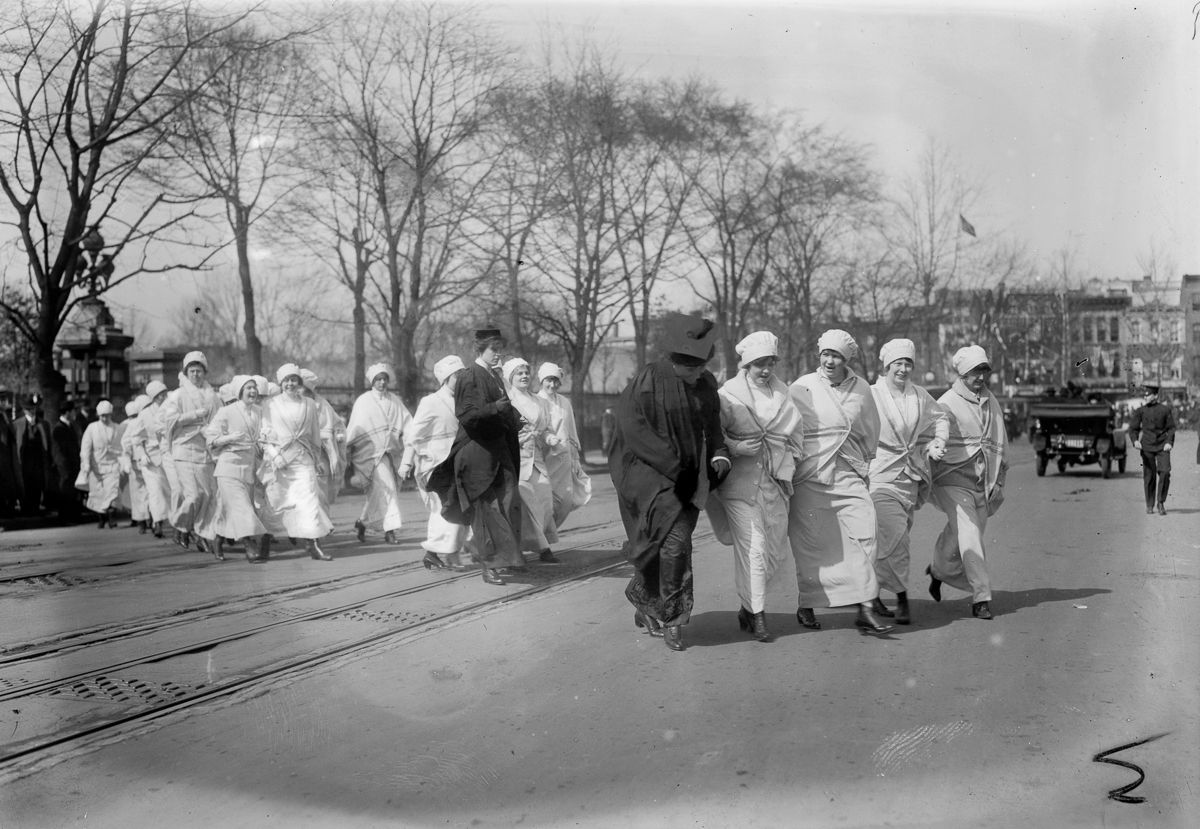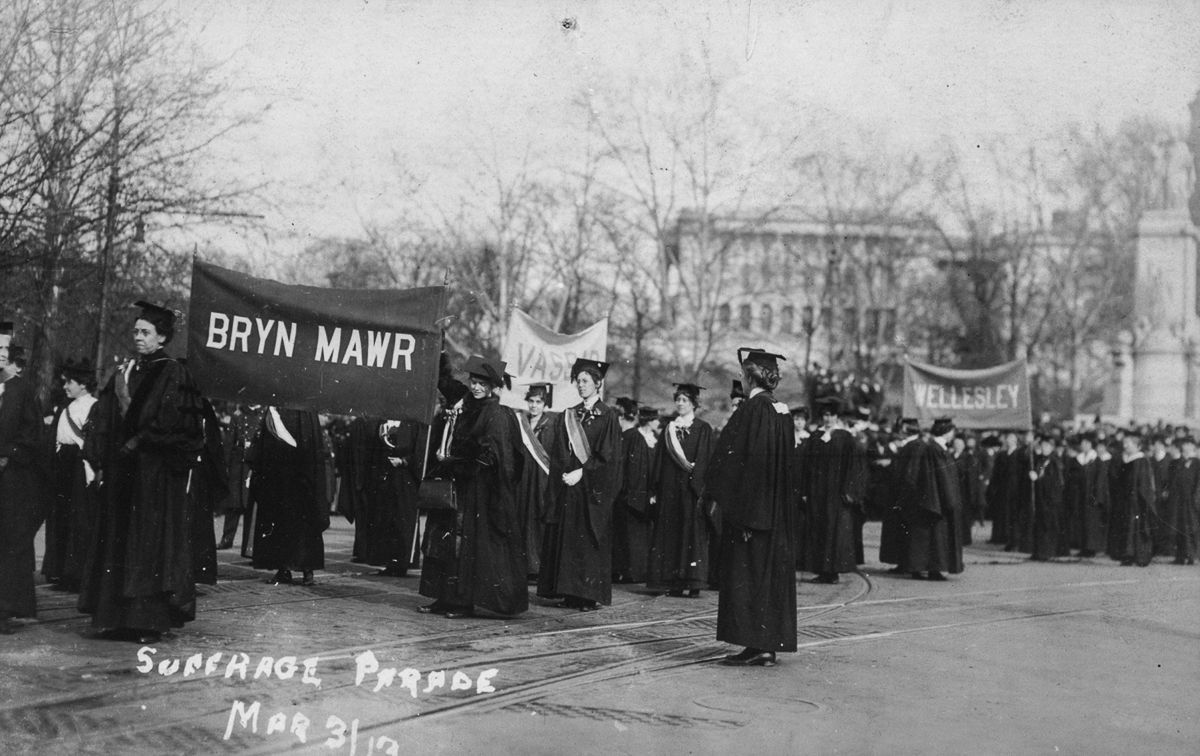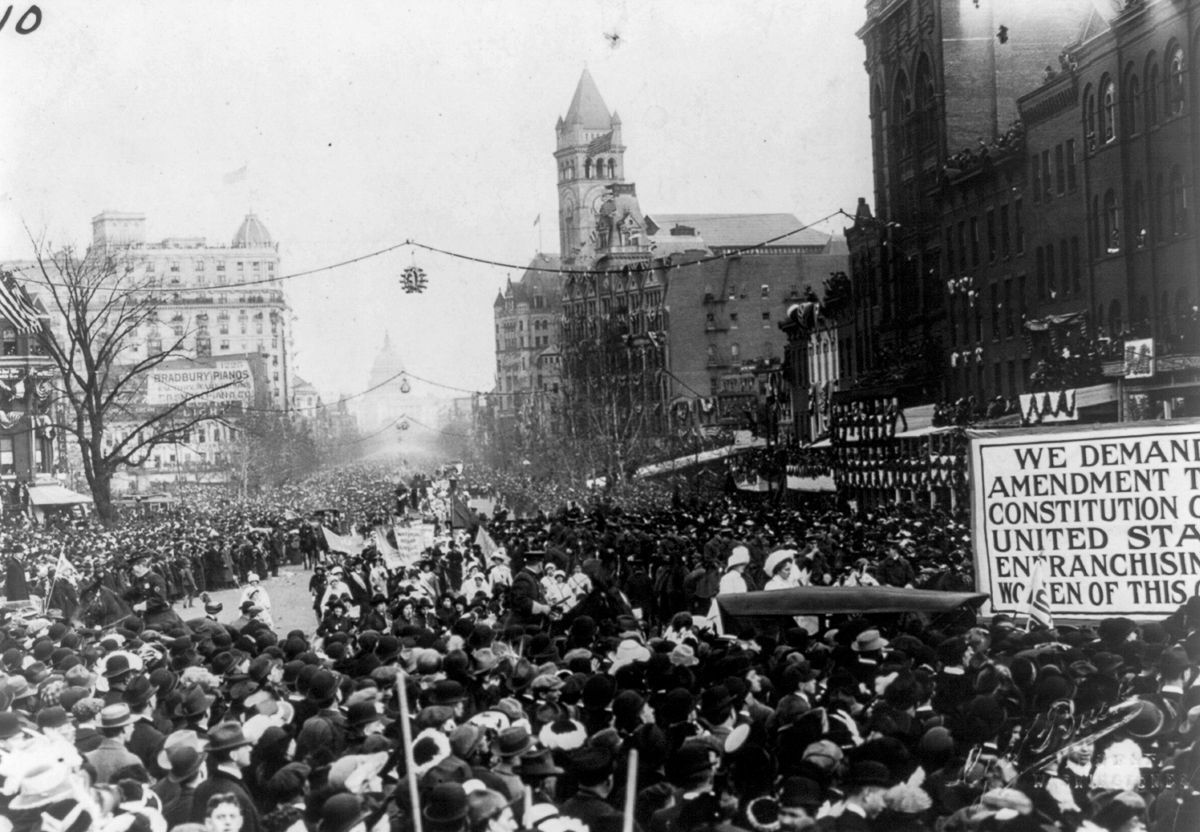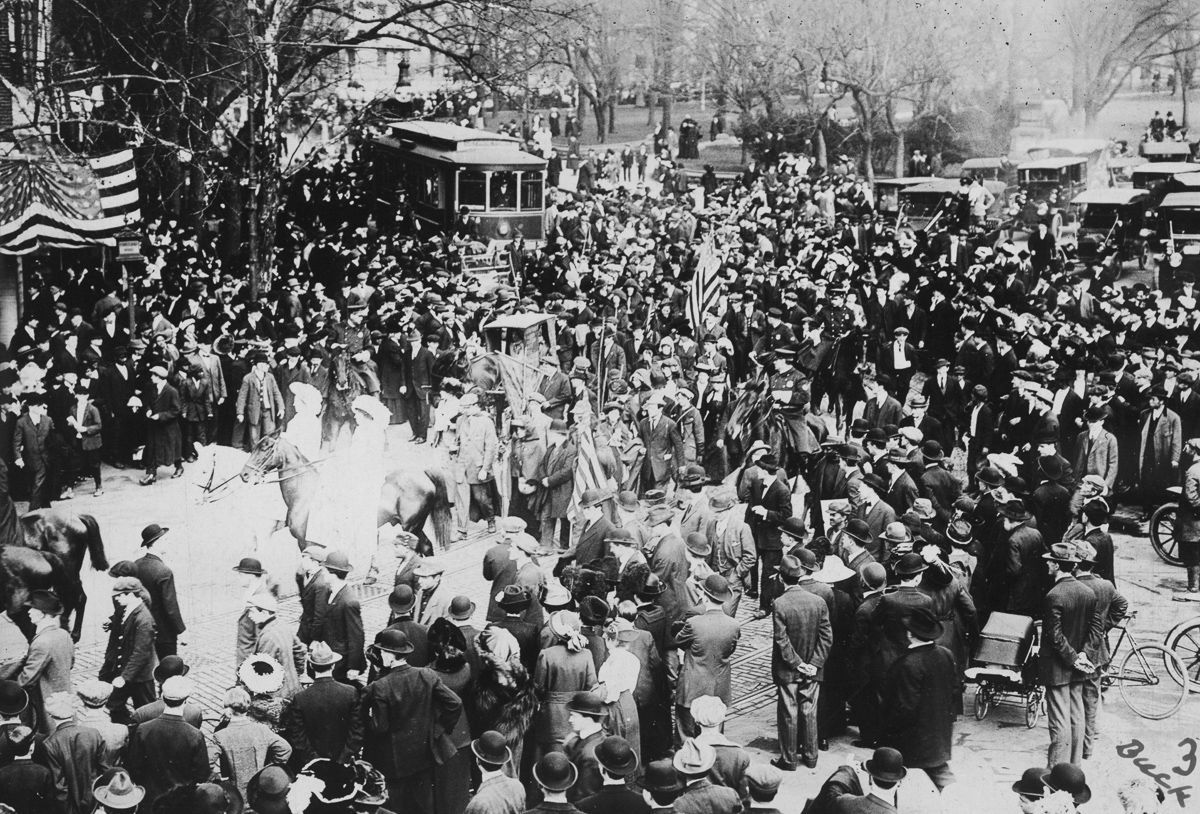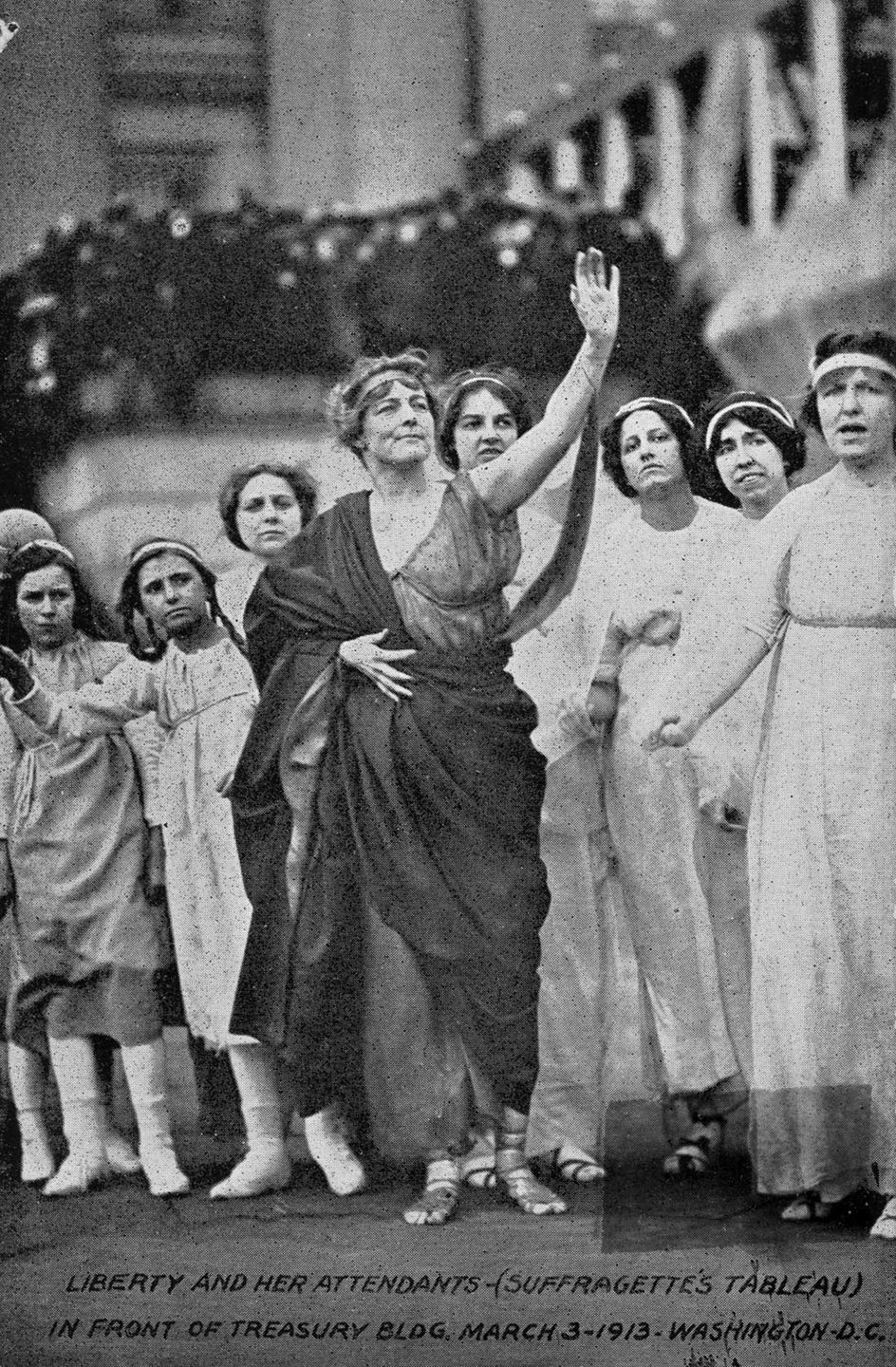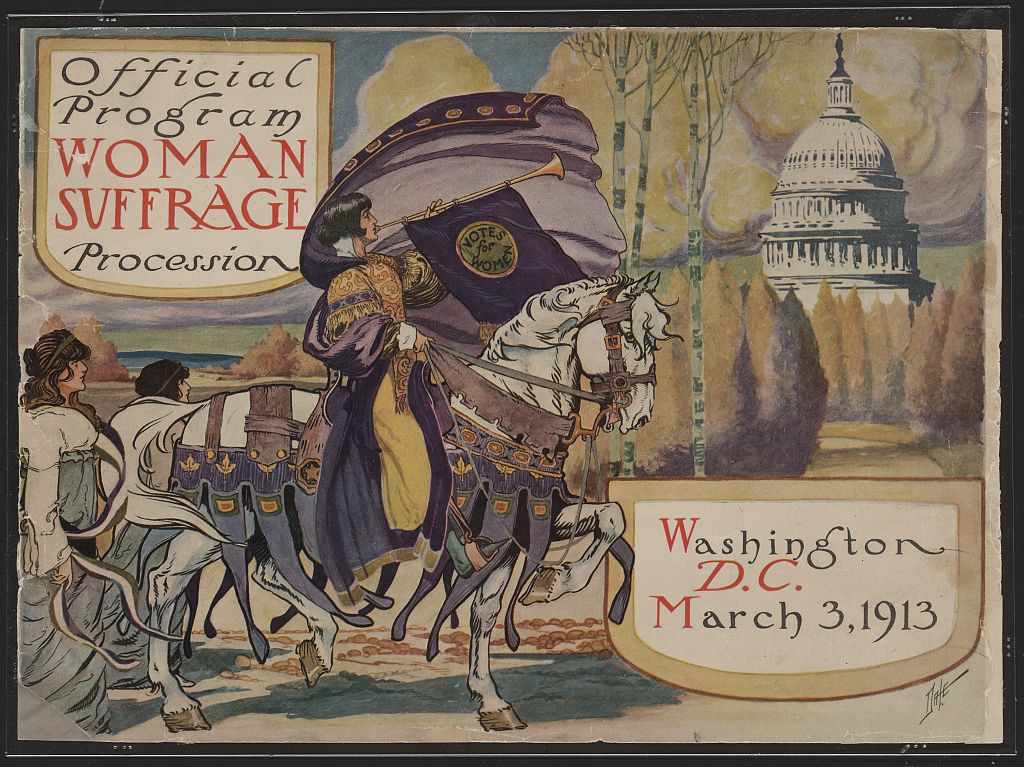“This is the most conspicuous and important demonstration that has ever been attempted by suffragists in this country…. This parade will be taken to indicate the importance of the suffrage movement by the press of the country and the thousands of spectators from all over the United States gathered in Washington for the Inauguration” – The National American Women Suffrage Association march on Washington DC, on the March 3 1913
On March 3 1913 the US National American Woman Suffrage Association (NAWSA) arrived in Washington DC, the day before Woodrow Wilson would be inaugurated as the county’s president. Roused by Alice Paul and Lucy Burns, women came from all over the world. On February 12 1913, suffragettes led by Rosalie Jones set out from New York. In DC they met up with another New Yorker, the lawyer Inez Milholland Boissevain (August 6, 1886 – November 25, 1916), dressed in white and sat atop a white horse at the head of 8,000 women, nine bands, four mounted brigades, three heralds and about twenty-four floats.
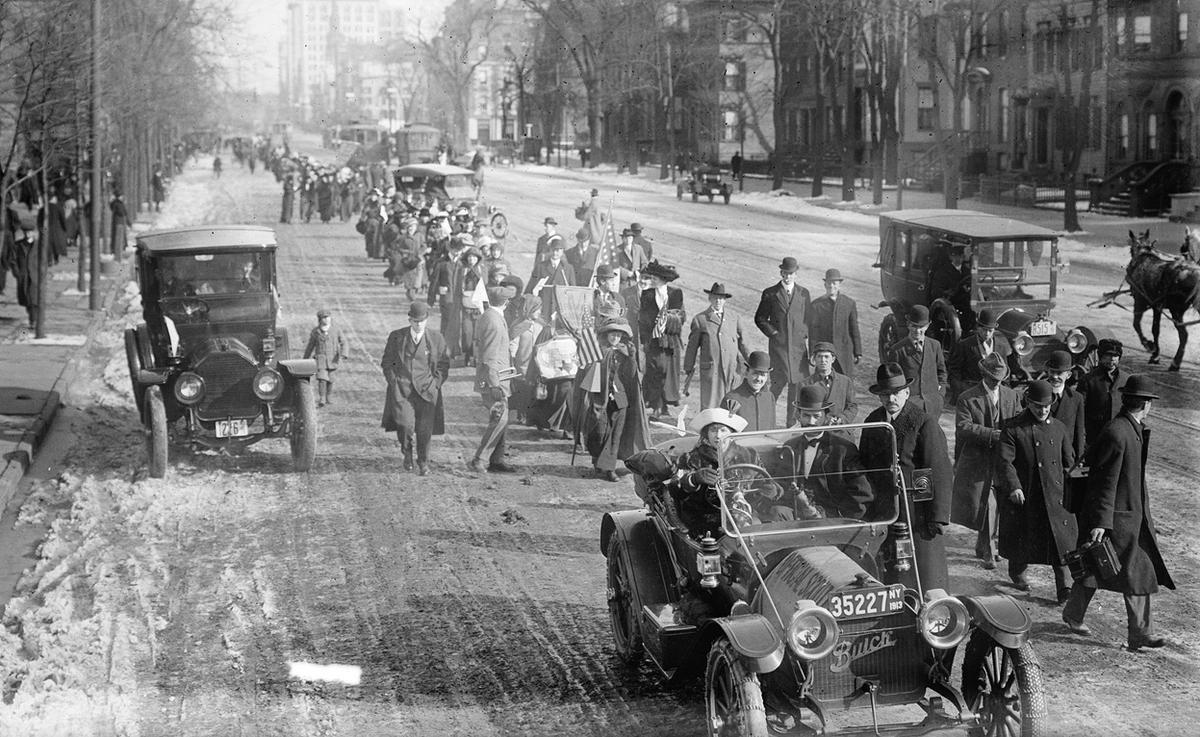
The hike lead by “General” Rosalie Jones from New York to Washington, District of Columbia, for the March 3, 1913 Suffrage parade. Photo taken in Newark, New Jersey on Broad Street, just north of West Kinney Street, on February 12, 1913. Rosalie Jones is walking behind the first car.
Marchers were jostled and ridiculed by many in the crowd. Some were tripped, others assaulted. Policemen appeared to be either indifferent to the struggling paraders, or sympathetic to the mob. Before the day was out, one hundred marchers had been hospitalized. The mistreatment of the marchers amplified the event — and the cause — into a major news story and led to congressional hearings, where the D.C. superintendent of police lost his job. What began in 1913 took another seven years to make it through Congress. In 1920, the Nineteenth Amendment secured the vote for women.
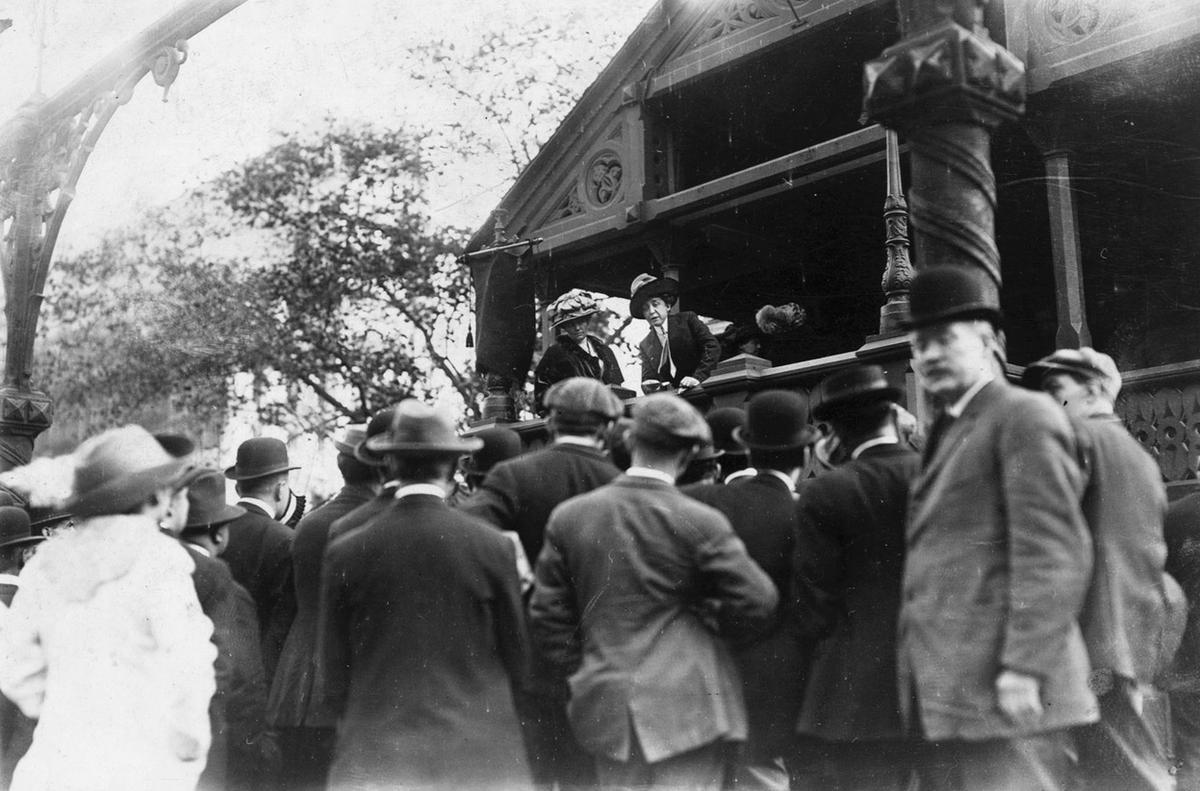
March 3, 1913 photo at the Suffrage Parade, showing marchers (left to right) Mrs. Russell McLennan, Mrs. Althea Taft, Mrs. Lew Bridges, Mrs. Richard Coke Burleson, Alberta Hill and Miss F. Ragsdale.
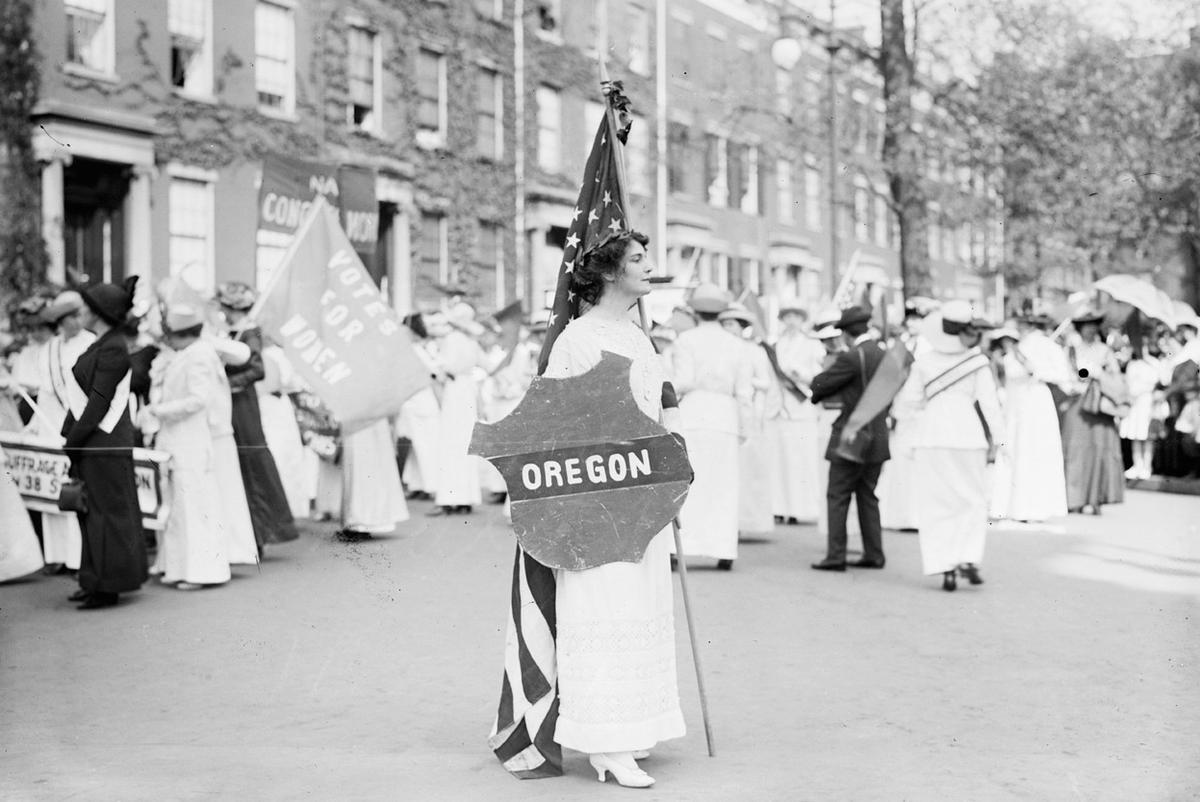
Actress Margaret Vale Howe, a participant in the suffrage parade in Washington, District of Columbia, in March of 1913.
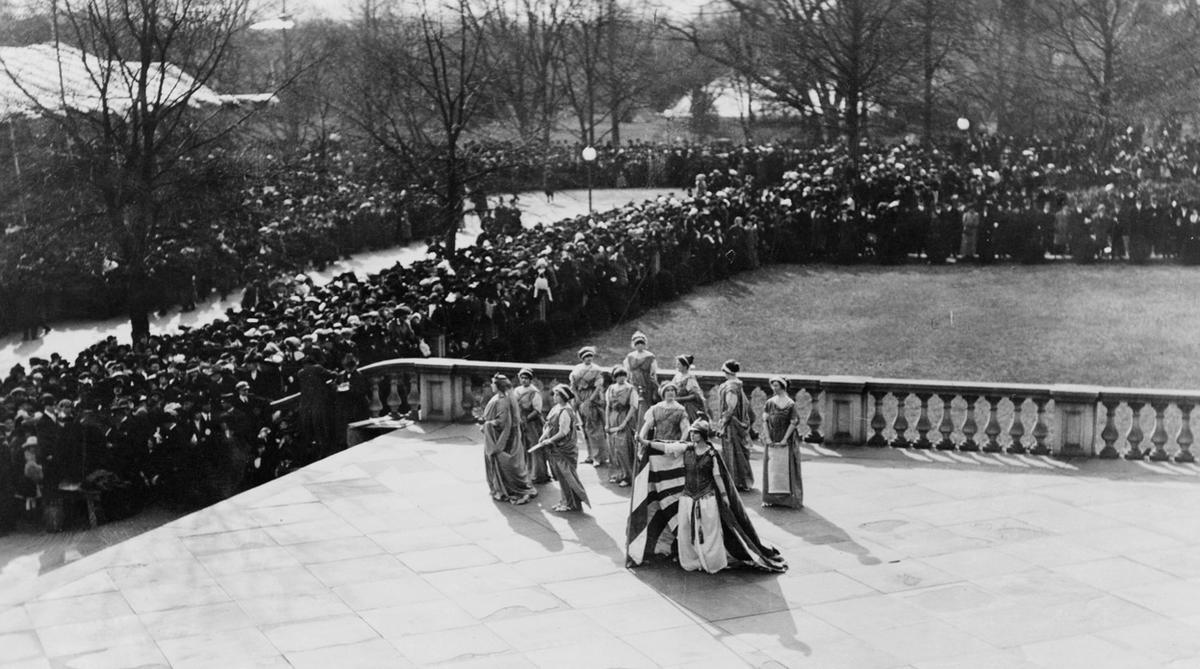
Tableau presented by the Women’s Suffrage Association, on the U.S. Treasury building steps, on March 3, 1913.
Would you like to support Flashbak?
Please consider making a donation to our site. We don't want to rely on ads to bring you the best of visual culture. You can also support us by signing up to our Mailing List. And you can also follow us on Facebook, Instagram and Twitter. For great art and culture delivered to your door, visit our shop.
